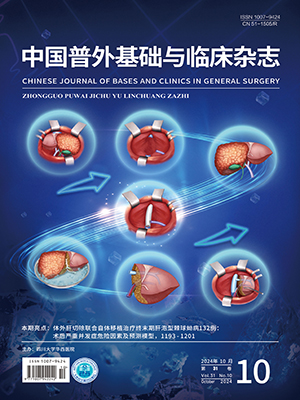| 1. |
Ferry N, Heard JM. Liverdirected gene transfer vectors [J]. Hum Gene Ther, 1998; 9(9)∶1975.
|
| 2. |
Grossman M, Rader DJ, Muler DWM, et al. A pilot study of ex vivo gene therapy for homozygous familial hypercholesterolemia [J]. Nature Med, 1995; 1(10)∶1148.
|
| 3. |
Kitten O, Cosset FL, Ferry N. Highly efficient retrovirusmediated gene transfer into rat hepatocytes in vivo [J]. Hum Gene Ther, 1997; 8(7)∶1491.
|
| 4. |
Tada K, Chowdhury NR, Neufeld D, et al. Longterm reduction of serum bilirubin levels in Gunn rats by retroviral gene transfer in vivo [J]. Liver Tansplant Surg, 1998; 4(1)∶ 78.
|
| 5. |
Shiraishi M, Tomori H, Nagahama M, et al. Stable gene expression with VSVG pseudotypedretrovirus vector in the rat liver [J]. J Surg Res, 1999; 84(1)∶168.
|
| 6. |
Jooss K, Yang Y, Wilson JM.Cyclophosphamide diminishes inflammation and prolongs transgene expression following delivery of adenoviral vectors to mouse liver and lung [J]. Hum Gene Ther, 1996; 7(8)∶1555.
|
| 7. |
Kay MA, Meuse L, Gown AM, et al. Transient immunomodulation with antiCD40 ligand antibody and CTLA4Ig enhances persistence and secondary adenovirusmediated gene transfer into mouse liver [J]. Proc Natl Acad Sci USA, 1997; 94(8)∶4686.
|
| 8. |
Ilan Y, Attavar P, Takahashi M, et al. Induction of central tolerance by intrathymic inoculation of adenoviral antigens into the host thymus permits longterm gene therapy in Gunn rats [J]. J Clin Invest, 1996; 98(10)∶2640.
|
| 9. |
Wang Q, Greenburg G, Bunch D, et al. Persistent transgene expression in mouse liver following in vivo gene transfer with a delta E1/delta E4 adenovirus vector [J]. Gene Ther, 1997; 4(2)∶393.
|
| 10. |
Dedieu JF, Vigne E, Torrent C, et al. Longterm gene delivery into the livers of immunocompetent mice with E1/E4defective adenoviruses [J]. J Virol, 1997; 71(5)∶4626.
|
| 11. |
Bruder JT, Jie T, McVey DL, et al. Expression of gp19k increases the persistence of transgene expression from an adenovirus vector in the mouse lung and liver [J]. J Virol, 1997; 71(9)∶7623.
|
| 12. |
Schiedner G, Morral N, Parks RJ, et al. Genomic DNA transfer a high capacity adenovirus vector results in improved in vivo gene expression and decreased toxicity [J]. Nature Genet, 1998; 18(1)∶180.
|
| 13. |
Walker SL, Wonderling RS, Owens RA. Mutational analysis of the adenoassociated virus Rep68 protein: identification of critical residues necessary for sitespecific endonuclease activity [J]. J Virol, 1997; 71(4)∶2722.
|
| 14. |
Di Pasquale G, Stacey SN. Adenoassociated virus Rep78 protein interacts with protein kinase A and its homolog PRKX and inhibits CREBdependent transcriptional activation [J]. J Virol, 1998; 72(10)∶7916.
|
| 15. |
Koeber1 DD, Alexander IE, Halbert CL, et al. Persistent expression of human clotting factor IX from mouse liver after intravenous injection of adenoassociated virus vectors [J]. Proc Natl Acad Sci USA, 1997; 94(3)∶1426.
|
| 16. |
Fracfel C, Jaeoby DR, Lage C, et al. Gene transfer into hepatocytes mediated by helper virusfree HSV/AAV hybrid vectors [J]. Mol Med, 1997; 3(2)∶813.
|
| 17. |
MartinezFong D, Mullersman JE, Purchio AF, et al. Nonenzymatic glycosylation of polyLlysine: a new tool for targeted gene delivery [J]. Hepatology, 1994; 20(6)∶1602.
|
| 18. |
Bandyopadhyay P, Kren BT, Ma X, et al. Enhanced gene transfer into HuHT cells and primary rat hepatocytes using transfer liposomes and polyethylenimine [J]. Biotechniques, 1998; 25(2)∶ 282.
|
| 19. |
Ueki T, Kaneda Y, Tsutsui H, et al. Hepatocyte growth factor gene therapy of liver cirrhosis in rats [J]. Nat Med, 1999; 5(2)∶ 226.
|
| 20. |
Hirano T, Fujimoto J, Ueki T, et al. Persistent gene expression in rat liver in vivo by repetitive transfections using HVJliposomc [J]. Gene Ther, 1998; 5(3)∶459.
|
| 21. |
Hara T, Tan Y, Huang L. In vivo gene delivery to the liver using reconstituted chylomicron remnants as a novel nonviral vector [J]. Proc Natl Acad Sci USA, 1997; 94(23)∶14547.
|




